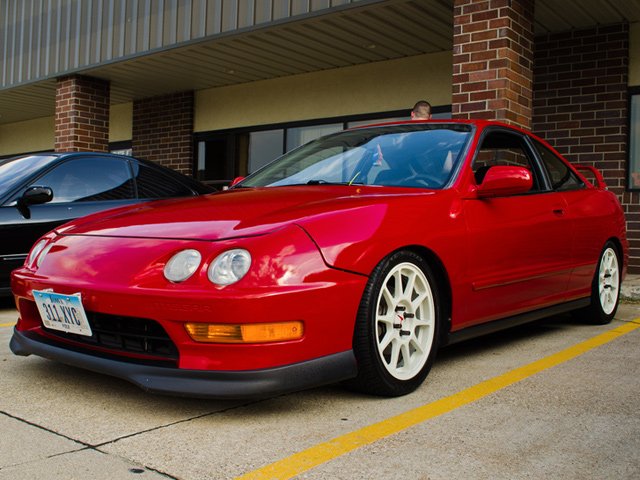It can be difficult to see what exactly it was that made the Integra so appealing, now that it has been out of production for so long, and its glory days in particular were a long time ago. It probably seems especially weird that a FWD car without a turbocharger could have become such a mainstay in the tuning world. But attention to detail which Honda lavished on the Integra was previously unheard of at the Integra's price level, and this came through when you drove the car.


The Integra was developed originally with the intent of giving Honda a sport coupe which would be competitive in the European market, and the UK market in particular. It was therefore given a more luxurious interior than most Hondas, and particular attention was paid to handling. Honda might have missed the mark a bit, as the Integra would end up being much more popular in the US than it was in Europe, but a win is still a win. Interestingly, the higher-priced Integra was actually closely related to the Civic, while the cheaper Prelude had originally been based on the Accord. It seems Honda decided to swap the positions in the lineup when it came to sporting versions.The first Integra was introduced in 1986, and at the time was one of the only entry-level models in the world to offer a dual overhead-cam engine with four valves per cylinder. But it still wasn't exactly cheap, and for this reason, Honda decided to sell it in North America as part of the newly-launched Acura brand. This was partly a way to justify the bigger price tag, but also a way to better distinguish it from the Prelude. The second generation of the Integra, introduced in 1990, was the most important to the history of the car, although it would be the third generation which would be more popular with tuners.


The second generation introduced Honda's F1-derived VTEC variable valve timing technology. This was not only the first Integra with the technology, but also the first Honda to use it. This was the beginning of Honda's use of the B-series engine with the Integra, although it was also used in other Honda products. The following year saw the introduction of the 1.8-liter B18 engine, and although this was initially offered without VTEC, the engine would get the technology soon enough. The third generation (1996-2001) produced the DC2 Type R, and this is generally considered to be pinnacle of the Integra's evolution.Evo Magazine named the this "the best front-wheel-drive driver's car ever", which is not something to be taken lightly. Of course, this wasn't the first time that the Integra's excellence was recognized. It made Car and Driver's Ten Best list eight times, twice in the second generation, four times in the third generation and twice more after the name was changed to RSX for the fourth generation. With all of this attention to detail which went into making the Integra a triumph of natural aspiration, many tuners chose to eschew the crudeness of forced induction and instead go with engine balancing, stroker kits, lightweight flywheels and other such N/A upgrades.


Of course, quite a lot of the modifications done to Integras were to simply use factory components to bring lower-trim models up to Type-R specs. The car was just so good as it was that care had to be taken when modifying it, lest it be made worse. The Integra was renamed the RSX in all markets where it was sold as an Acura when the fourth generation debuted in 2002, complete with a new K-series engine. Though a perfectly good engine, the K-series was not ahead of the technological curve the way the preceding engines had been, and the RSX would therefore lose its place in the spotlight.Tuners still worked with these cars, and as we mentioned, Car and Driver still praised it in stock form. But the car was no longer the icon it had been when it was powered by B-series engines, and it would be completely killed off in 2006.




Related News



